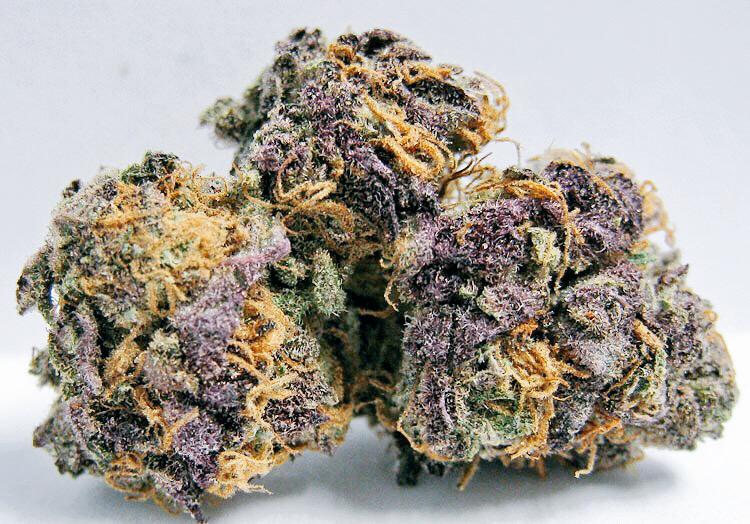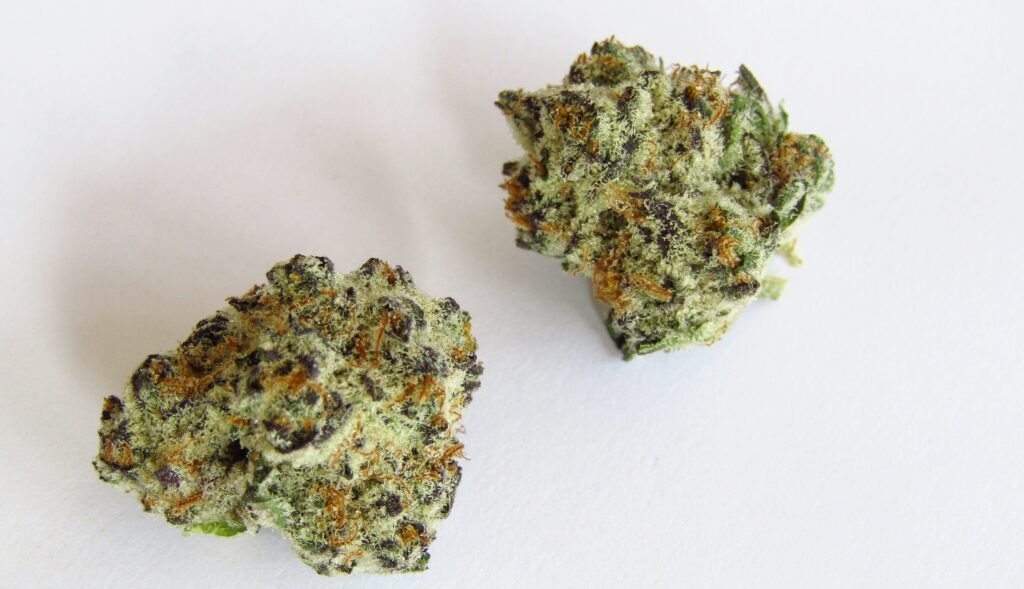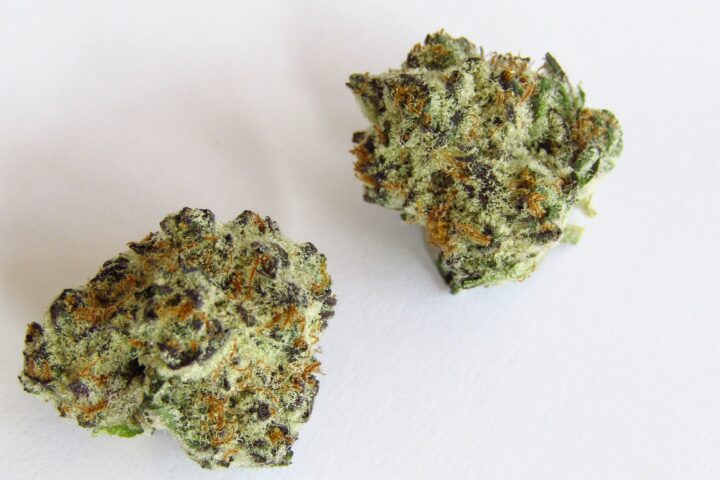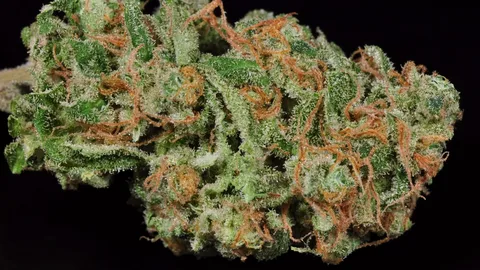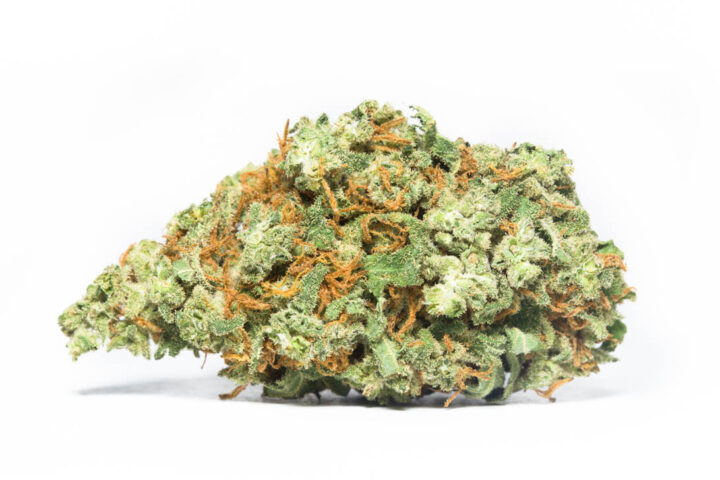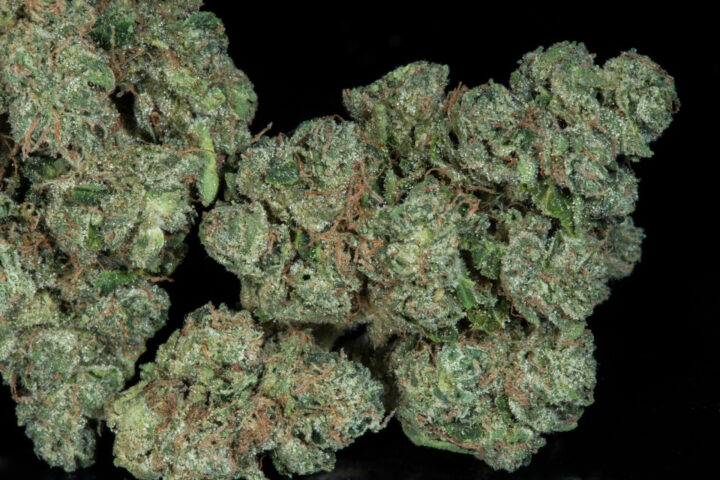History of Yellow Zushi
Origin and Genetics
The origin of Yellow Zushi, also known as Yellow Sushi, a popular cannabis strain, dates back to the early 2000s in California. Its genetic lineage is shrouded in mystery, making it difficult to pinpoint its exact creators or breeders.
However, based on observations and grower feedback, Yellow Zushi’s genetic makeup is believed to be a cross between two strains: Haze and White Widow, although this has not been officially confirmed by the breeders.
Haze, with its sativa-dominant genetics, contributes to the uplifting effects of Yellow Zushi. Its THC levels range from 15% to 22%, making it a moderately potent strain that provides a clear-headed high suitable for social situations and daytime use.
On the other hand, White Widow adds to the plant’s robust yield, with growers often harvesting over an ounce of bud per foot of growth. Its indica properties also help regulate pain relief, adding depth to the strain’s therapeutic profile.
The result of this cross is a strain that embodies the best of both worlds – Haze’s energizing effects and White Widow’s medicinal properties.
While some breeders claim Yellow Zushi to be an auto-flowering variant, there is limited evidence supporting this. Nevertheless, it remains popular among growers due to its relatively low maintenance requirements and impressive yield.
Its distinct appearance, characterized by large, dense buds with a bright yellow-green hue, distinguishes it from other strains in the market. The coloration comes from a high concentration of chlorophyll and carotenoids, giving it an irresistible appearance.
In terms of its genetic makeup, Yellow Zushi’s exact lineage remains a mystery. As with many cannabis strains, the breeders’ secrets remain undisclosed, making it challenging to predict or replicate the strain.
Despite this, growers continue to cultivate and experiment with Yellow Zushi due to its exceptional yield and medicinal properties, solidifying its position in the market as a sought-after strain.
Key Features of Yellow Sushi (Yellow Zushi):
- Potency: 15% – 22% THC
- Appearance: Bright yellow-green buds with high chlorophyll and carotenoid content
- Yield: Over an ounce per foot of growth
- Growth Characteristics: Sativa-dominant, moderate maintenance requirements
The historical context surrounding Yellow Zushi is shrouded in mystery. As such, it remains an enigma to the cannabis community.
Yellow Zushi is a cannabis strain believed to be derived from the South African indigenous plant, Cannabis sativa, which has been used for medicinal and spiritual purposes.
The history of Yellow Zushi, also known as Yellow Sushi, is deeply rooted in its ancestral lineage from the indigenous plant, Cannabis sativa, which originated in South Africa.
Cannabis sativa has been utilized for centuries by native populations for a variety of purposes, including medicinal and spiritual practices.
The plant’s versatility and potency have made it an integral part of many cultures, with evidence suggesting that its use dates back to ancient civilizations such as the Egyptians, Greeks, and Romans.
As the plant spread across the globe, it was adapted and cultivated by various societies, resulting in diverse strains with unique characteristics and effects.
Yellow Zushi is believed to be a derivative of this ancestral plant, refined over time through selective breeding and cultivation to produce its distinctive flavor profile and psychoactive properties.
The name “Zushi” is likely derived from the Japanese term for sushi, which may hint at the strain’s Asian roots or associations with Eastern culture.
However, it’s essential to note that the exact origins of Yellow Zushi remain unclear, as many cannabis strains have been developed in secret by individual growers and breeders over the years.
Nonetheless, its connection to Cannabis sativa provides a glimpse into its rich history and underscores the significance of this plant in human culture.
Throughout its journey from ancient South Africa to modern-day cultivation, Yellow Zushi has been shaped by the interactions between people, environment, and genetics, yielding a unique strain that continues to captivate enthusiasts.
The allure of Yellow Zushi lies not only in its reported effects but also in its mysterious past, which whispers stories of forgotten cultures, hidden traditions, and the enduring power of this enigmatic plant.
The exact origin of the strain is unknown, but its characteristics are often associated with landrace varieties.
The origins of Yellow Zushi, also known as Yellow Sushi, are shrouded in mystery, making it challenging to pinpoint its exact history. However, based on its characteristics and growth patterns, many cannabis enthusiasts believe that this strain shares traits commonly associated with landrace varieties.
Landrace strains are typically grown locally and have evolved over time to thrive in specific environmental conditions. These unique adaptations enable them to withstand the local climate, soil quality, and pests, making them well-suited to their native regions.
The characteristics of Yellow Zushi that are reminiscent of landrace varieties include its sturdy growth pattern, robust yield, and resistance to common diseases and pests. Landraces often exhibit a high degree of adaptability and resilience, allowing them to thrive in a wide range of environments.
Yellow Zushi’s exact origin remains a topic of debate among cannabis connoisseurs. Some speculate that it may have originated from the Himalayan region or Southeast Asia, where the climate and soil conditions are conducive to growing high-quality cannabis.
Others believe that it could be a descendant of a strain brought back from these regions by travelers or traders. The fact that Yellow Zushi exhibits characteristics similar to landrace strains suggests that it may have undergone natural selection over time, adapting to its environment in unique ways.
Despite the uncertainty surrounding its origins, Yellow Zushi has gained popularity among cannabis enthusiasts for its distinct flavor profile and potent effects. Its history remains a topic of fascination, with many hoping to uncover more about this enigmatic strain’s past.
Effects and Characteristics
Physical and Euphoric Effects
The Yellow Zushi, also known as Yellow Sushi, is a cannabis strain that has gained popularity among users for its unique effects and characteristics.
Physical Effects:
- The physical effects of Yellow Zushi are characterized by a deep relaxation and sedation, often accompanied by feelings of heaviness in the body.
- User reports also mention a decrease in anxiety and stress levels, creating an environment conducive to unwinding and calming down.
- As with many cannabis strains, Yellow Zushi can induce sleepiness or drowsiness, making it ideal for users looking to relax and prepare their bodies for rest.
Euphoric Effects:
- The euphoric effects of Yellow Zushi are described as calming and soothing, providing a sense of well-being and happiness in the user.
- User reports also mention an increase in creativity and focus, making it ideal for individuals looking to engage in activities that require mental acuity.
- Additionally, Yellow Zushi is known to induce a feeling of calmness and serenity, which can be beneficial for users struggling with anxiety or stress-related disorders.
In terms of its overall effects, Yellow Zushi is often described as an indica-dominant strain due to its sedating properties and relaxing effects on the body and mind.
Yellow Zushi is reported to produce a potent and longlasting high characterized by increased energy and creativity.
The Yellow Zushi strain has been reported to produce a potent and long-lasting high, characterized by an increase in energy and creativity.
As a result of its potent effects, users often report feeling more invigorated and motivated, with enhanced focus and mental clarity.
One of the key characteristics of this strain is its ability to stimulate the mind, leading to increased imagination and creative thinking.
The high from Yellow Zushi is said to be both energetic and calming, allowing users to feel a sense of relaxation and tranquility while also being physically and mentally active.
Another notable effect of this strain is its ability to reduce anxiety and stress, promoting a sense of calmness and well-being in those who use it.
With its potent and long-lasting high, Yellow Zushi has become a popular choice among cannabis users seeking a creative and energizing experience.
In terms of its physical characteristics, the buds of this strain are typically bright yellow or orange in color, with thick trichomes that give off a resinous and fragrant aroma.
The scent is often described as sweet and earthy, with notes of citrus and herbal undertones.
Overall, Yellow Zushi is a unique and highly potent strain that offers users a range of creative, energetic, and calming effects, making it an attractive option for those seeking a cannabis experience that combines mental stimulation and physical relaxation.
Users describe the experience as euphoric, with heightened sensory perception and an enhanced sense of wellbeing.
The effects of Yellow Zushi, also known as Yellow Sushi, are reported to be euphoric and pleasurable by users, resulting in heightened sensory perception and an enhanced sense of wellbeing.
Some notable characteristics of this strain include:
- Euphoria
- Increased sensory perception
- Enhanced sense of wellbeing
- Creative and mood-enhancing effects
The strain’s specific genetic makeup is not widely publicized, but it is believed to be a cross between two other strains, contributing to its unique effects.
Users report feeling more alert and focused when taking Yellow Zushi, making it a popular choice for daytime use or creative activities.
However, individual reactions may vary greatly depending on the user’s tolerance level, dosage, and personal preferences.
In terms of appearance, Yellow Zushi features a vibrant yellow-green color with dark green leaves and white or pinkish hairs, making it visually distinct from other strains.
Growers can cultivate this strain indoors using standard growing conditions, but its exact yield is not well-documented.
Cultivation and Uses
Cultivation Requirements and Considerations
Cultivation and Uses:
The Yellow Zushi strain, also known as Yellow Sushi, is a high-grade cannabis variety prized for its potent effects and unique appearance.
It has been observed that this strain excels in both indoor and outdoor growing environments, making it accessible to growers with various experience levels.
As a hybrid of sativa and indica genetics, the Yellow Zushi strain offers an intriguing combination of cerebral and physical effects, ideal for those seeking relaxation without drowsiness.
The high THC content typically found in this strain makes it well-suited for experienced consumers looking to push their limits or alleviate symptoms associated with chronic pain, anxiety, or depression.
Cultivation Requirements:
To cultivate the Yellow Zushi strain, growers will require a moderate climate with temperatures ranging from 65°F to 75°F (18°C to 24°C) during the day and slightly cooler nights.
Adequate ventilation is essential for preventing mold growth, which can be a concern when cultivating indoor crops, especially those with high humidity levels.
Growers should also ensure they provide sufficient light exposure; ideally using LED or HPS lighting systems with a 12/12-hour photoperiod to maximize yields and optimize growth patterns.
Cultivation Considerations:
The Yellow Zushi strain is typically ready for harvest in approximately 60-70 days when grown indoors and around 90-100 days when cultivated outdoors.
Due to its compact size, this strain is well-suited for small-space growers or those with limited equipment.
Growers will also want to keep a close eye on humidity levels throughout the growing process; maintaining an optimal range between 30-50% can minimize issues associated with mold and mildew growth.
Maintenance tasks, such as pruning, training, and defoliation, should be performed regularly to ensure optimal yields and healthy plant development.
A well-balanced nutrient supply is crucial for promoting the growth and development of strong, disease-resistant plants that produce high-quality buds.
Yellow Zushi requires a warm and dry climate to thrive, with ideal temperatures ranging from 2025°C (6877°F).
The cultivation of Yellow Zushi requires a warm and dry climate to thrive, with ideal temperatures ranging from 20-25°C (68-77°F). This strain prefers well-draining soil and full sun exposure to promote healthy growth.
When cultivating Yellow Zushi, it’s essential to maintain optimal humidity levels, typically between 40-50%. The plants require regular watering, but ensure the soil isn’t waterlogged, as this can lead to root rot and other issues.
The use of LED grow lights or hydroponic systems can also benefit this strain, providing precise control over light intensity and nutrient delivery. However, Yellow Zushi is known to be resilient in a variety of growing conditions, making it accessible for cultivators with varying experience levels.
For optimal results, prune the plants regularly to maintain their shape, promote air circulation, and encourage bud development. This strain can grow relatively tall, but trimming the foliage will help control its height and focus energy on flowering sites.
In terms of specific cultivation requirements, Yellow Zushi thrives when fed with a balanced fertilizer diet during the vegetative stage. As the plants transition to flowering, increase nutrient input to provide essential building blocks for bud development.
When it comes to harvesting, inspect the buds regularly, checking for the ideal ratio of trichomes and aroma development. A golden or amber color often indicates readiness for harvest, typically between 7-10 weeks after switching to flowering.
The strain is known for its high THC content, making it suitable for experienced growers who can handle its potent yields.
The cultivation of Yellow Zushi, also known as Yellow Sushi, is a process that requires great care and attention to detail due to its high THC content.
This strain is suitable for experienced growers who are familiar with handling potent yields and can provide the necessary conditions for it to thrive.
Yellow Zushi is a indica-dominant hybrid that originates from a cross between two unknown strains, resulting in a unique and complex profile.
The high THC content of Yellow Zushi makes it a popular choice among cannabis enthusiasts who are looking for a potent strain to aid in relaxation, reduce stress, and increase appetite.
When grown indoors or outdoors, this strain requires a moderate climate with adequate sunlight, water, and nutrients to reach its full potential.
The plant’s structure is typically bushy with a medium to large size, producing an average yield of 12-15 ounces per square foot after a flowering period of around 8-9 weeks.
Experienced growers can expect to harvest a high-quality crop of buds that are rich in flavor and aroma, with notes of lemon, citrus, and earthy undertones.
The effects of smoking or consuming Yellow Zushi are intense and long-lasting, providing users with a deep sense of relaxation and calmness that can last for several hours.
- Yoda OG Aka Yoda Weed Strain Information - October 10, 2024
- Yellow Zushi Aka Yellow Sushi Weed Strain Information - October 10, 2024
- Wappa Weed Strain Information - October 8, 2024



